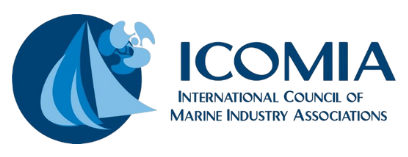For information on boat registration and licenses by state, please visit http://uscgboating.org/regulations/boatbuilders-handbook.php. Alternatively, you may visit a database both for boat registration and tax information by state at http://www.boatus.com/gov/StatetaxRegistration.asp. In order for a boat to be registered, the boat manufacturer or importer must provide the purchaser with a Certificate of Origin. For information on this certificate, please visit http://uscgboating.org/regulations/boatbuilders-handbook.php
RRG Country: USA
Australia Belgium Canada Cyprus Czech Republic Denmark Estonia Finland France Germany Greece Hong Kong Hungary Ireland Italy Japan Netherlands New Zealand Norway Poland Portugal Singapore South Africa Spain Sweden Switzerland Türkiye United Kingdom USA website@icomia.org
-
USA – Registration
-
USA – Product Liability
Product liability is governed by lawsuits and case law. Warranty requirements are covered by federal and state law. For a comprehensive guide on state warranty repair law: http://www.nmma.org/membership/resources/marine-warranty-law. The US Coast Guard (USCG) has authority to require recalls of unsafe boats and certain associated equipment. In most states, liability insurance is not mandatory for boaters. For information on mandatory insurance by state, please visit http://www.nasbla.net/referenceguide/index.php?queryID=6.2.
-
USA – Environment
Noise limits under consideration or already in place in most States. Emissions standards set by USEPA in place for SI stern drive/inboard, outboard engines and PWC. EPA and California regulations for engine emissions are currently all harmonized. California has taken steps to require alternative evaporative emissions standards for boat builders from EPA requirement. For more information on US EPA emission requirements: https://www.epa.gov/regulations-emissions-vehicles-and-engines/regulatio…
-
USA – Marinas and Harbours
Local jurisdiction standards govern expansion and new development of marinas. There are federal guidelines for handicapped access. A range of environmental and safety regulations relevant to marinas and harbors are in force at federal, state and local level. More detailed information can be found at http://www.marinaassociation.org. For information on relevant federal environmental regulations, please visit http://www.epa.gov/owow_keep/NPS/marinas.html.
-
USA – Drivers Licences
The United States does not issue drivers licenses for boaters. However, there is an increasing trend at state level for mandatory boater education, and most states require training for juveniles. For information on boating education requirements by state, please visit http://www.nasbla.net/referenceguide/index.php?queryID=2.1.
-
USA – Construction Standards and Certification
The US Coast Guard (USCG) has oversight over mandatory government regulation concerning construction standards for the boating industry. Potential manufacturers or importers of recreational boats must contact the USCG Boating Safety Divisions Recreational Boating Product Assurance Division at 001 202 372-1077 and request a Manufacturers Identification Code (MIC) form. For the USCG Boatbuilders Handbook on construction standards and compliance guidelines, please visit http://uscgboating.org/regulations/boatbuilders-handbook.php. In addition, the National Marine Manufacturers Association (NMMA) provides voluntary product certification services. For these programs, please visit http://www.nmma.org/certification
-
USA – Health & Safety/Exposure Levels
The limit for styrene levels in the United States is 100 ppm, with some states implementing a voluntary code with lower levels. Industry has agreed to follow a 50ppm level.
-
USA – Safety Equipment
Minimum maritime safety requirements apply at federal level. Please consult US Coast Guard Recreational Boater’s Website at http://uscgboating.org/recreational-boaters/. For information on the mandatory use of life jackets by state, please visit http://www.nasbla.net/referenceguide/index.php?queryID=4.9.
-
USA – Zero Emission Zones
Federal Laws that regulate air and water emissions from watercraft. Every lake in the US is regulated by either the state or local government or in many cases the Army Corp of Engineers and National Park Service. With that said there are lakes in the US where certain types of boats can be limited or banned. There are lakes where engine size is limited and lakes that are two small to support gas engines, but electric is allowed.There are no tax incentives or reduced annual registration fee for using a specific type of engine. In some states if a boat is less than a certain size then the registration fee can be waived, but that is regardless of the propulsion method.
